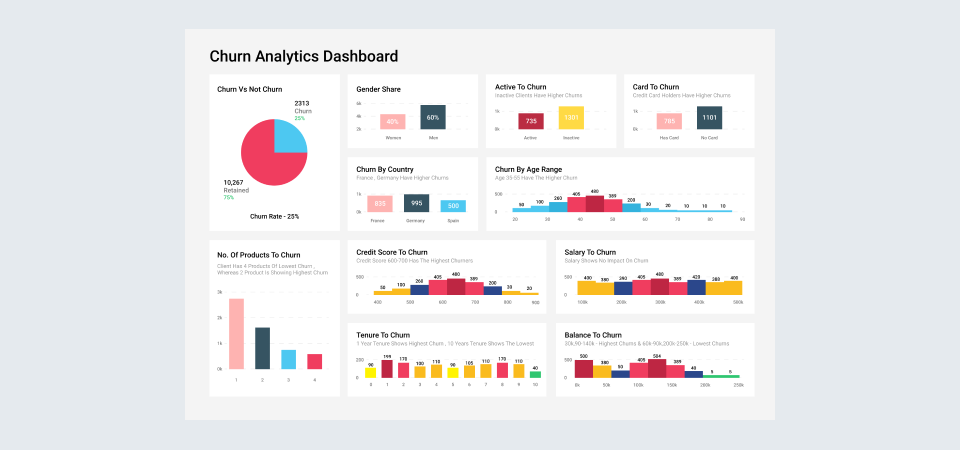Churn Analysis
What is Churn Analysis?
Definition:
“Churn Analysis” in the realm of business and subscription services refers to the examination and evaluation of customer churn, which is the percentage of customers or subscribers who discontinue using a product or service over a specific period. Churn analysis involves studying patterns, identifying reasons for customer attrition, and implementing strategies to reduce churn. It is a crucial process for businesses to understand and address customer dissatisfaction, enhance service quality, and maintain a healthy customer base.
Analogy:
Think of Churn Analysis as detective work for customer loyalty. Similar to how detectives investigate and analyze evidence to solve a case, churn analysis involves examining customer data and feedback to uncover insights and solve the mystery of why customers are leaving, enabling businesses to take corrective actions.
Further Description:
Churn Analysis encompasses the examination of customer behavior, feedback, and interactions with a product or service. It aims to identify factors contributing to customer dissatisfaction, such as poor user experience, pricing issues, or competition. By leveraging data analytics and customer feedback, businesses can develop targeted retention strategies to improve customer satisfaction and reduce churn.
Why is Churn Analysis Important?
Churn Analysis is vital for businesses with subscription models or recurring revenue streams. It provides insights into customer satisfaction, helps identify areas for improvement, and guides the development of effective retention strategies. Understanding why customers leave allows businesses to make data-driven decisions, enhance service offerings, and ultimately retain more customers, contributing to long-term business success.
Examples and Usage:
Customer Feedback Analysis: Churn analysis involves examining customer feedback, surveys, and reviews to understand specific pain points and areas for improvement.
Usage Patterns: Studying customer usage patterns can reveal insights into whether customers find value in a product or service, influencing retention strategies.
Competitive Benchmarking: Churn analysis may include comparing churn rates with industry benchmarks to understand how a business fares against its competitors.
Personalized Retention Offers: Businesses can use churn analysis to tailor retention offers or promotions to specific customer segments, addressing their unique needs.
Basically, Churn Analysis examines customer attrition, aiming to understand why customers discontinue using a product or service and implementing strategies to reduce churn.
For example, a subscription-based streaming service might conduct churn analysis to identify reasons for subscriber cancellations, leading to improvements in content, user experience, or pricing to enhance customer retention.
Key Takeaways:
- Churn Analysis involves the examination and evaluation of customer churn, aiming to understand and reduce customer attrition.
- It includes studying customer behavior, feedback, and interactions to identify factors contributing to dissatisfaction.
- Examples include analyzing customer feedback, studying usage patterns, competitive benchmarking, and creating personalized retention offers.
- Churn Analysis is essential for businesses with subscription models, guiding data-driven decisions to improve customer satisfaction and retention.





